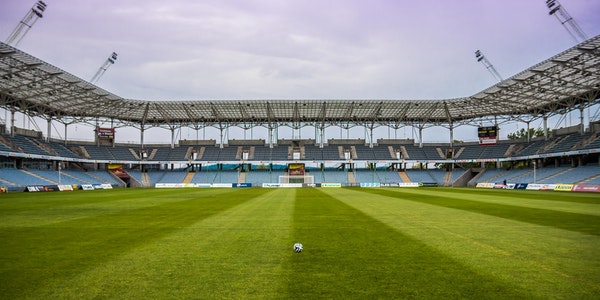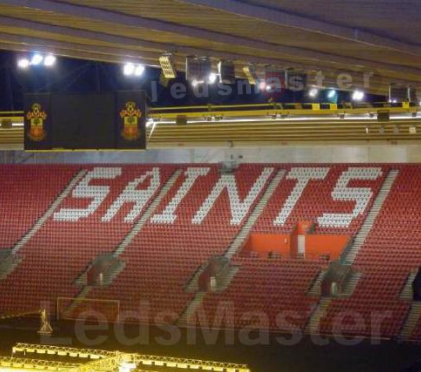B. Technological Adoption
1. Training and education for facility managers
Effective training and education for facility managers are crucial to maximize the benefits of LED stadium lighting. This includes understanding the technology, managing installations, optimizing operations, and maintaining the system. Here’s a comprehensive outline for training and education programs tailored for facility managers:
- Understanding LED Technology
- Fundamentals of LED Lighting:
LED Basics: Explanation of how LEDs work, including semiconductor physics and the conversion of electricity into light.
Types of LED Fixtures: Overview of various LED lighting fixtures used in stadiums (e.g., floodlights, spotlights, and ambient lights).
- Benefits of LED Lighting:
Energy Efficiency: Detailed discussion on energy consumption comparison between LED and traditional lighting.
Longevity and Durability: Insights into the lifespan and durability of LED lights.
Environmental Impact: Understanding the reduction in carbon footprint and waste.
- Technical Specifications:
Color Temperature and CRI (Color Rendering Index): How to select the right color temperature and understand the importance of CRI for visual clarity.
Lumens and Wattage: Key metrics for evaluating light output and energy usage.
Flicker-Free Performance: Importance and benefits of flicker-free LED lighting.
- Installation and Integration
- Planning and Design:
Lighting Layout: Techniques for designing effective lighting layouts tailored to different types of sports and events.
Fixture Selection: Choosing the right LED fixtures based on specific needs and requirements.
Integration with Existing Systems: Strategies for integrating LED lighting with current electrical and control systems.
- Installation Best Practices:
Safety Protocols: Ensuring safe installation practices to prevent accidents and ensure compliance with regulations.
Wiring and Connectivity: Best practices for wiring and ensuring reliable connectivity.
Testing and Calibration: Procedures for testing and calibrating LED lighting systems post-installation.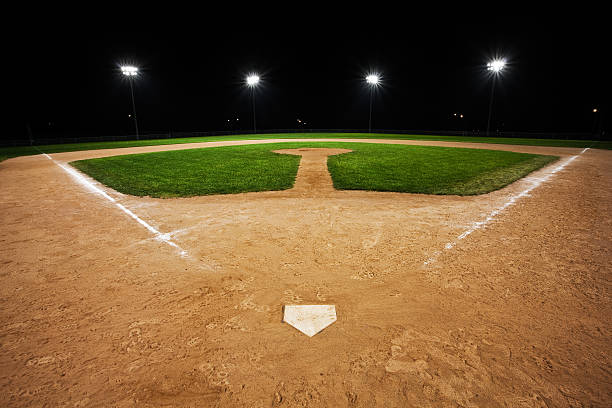
- Operation and Optimization
- Automated Control Systems:
Smart Lighting Controls: Introduction to IoT and smart control systems for automated and remote lighting management.
Scheduling and Dimming: How to program schedules and use dimming features to save energy and enhance events.
Customization for Events: Tailoring lighting settings for different types of events and activities.
- Energy Management:
Monitoring Consumption: Tools and techniques for monitoring energy consumption and identifying savings opportunities.
Optimizing Usage: Strategies for optimizing light usage based on event schedules and natural daylight.
- Maintenance and Troubleshooting
- Routine Maintenance:
Regular Inspections: Establishing a schedule for regular inspections and preventive maintenance.
Cleaning and Upkeep: Proper cleaning methods to maintain optimal performance and longevity of LED fixtures.
- Troubleshooting Common Issues:
Identifying Problems: Common issues such as connectivity problems, flickering, and dimming malfunctions.
Problem-Solving Techniques: Step-by-step guide to diagnosing and solving common LED lighting issues.
- Replacement and Upgrades:
End-of-Life Management: Recognizing when fixtures need replacement and understanding end-of-life options.
Upgrading Systems: Strategies for upgrading to newer technologies and integrating additional features.
- Sustainability and Compliance
- Environmental Regulations:
Compliance Requirements: Understanding local, state, and federal regulations related to energy efficiency and lighting.
Sustainability Goals: Aligning lighting operations with broader sustainability and environmental goals of the facility.
- Reporting and Documentation:
Energy Savings Documentation: How to document and report energy savings and operational efficiency improvements.
Sustainability Reporting: Contributing to sustainability reports and communicating the benefits of LED lighting upgrades.
- Continuous Education and Support
- Ongoing Training Programs:
Workshops and Seminars: Regular workshops and seminars to keep facility managers updated on the latest technologies and best practices.
Online Courses: Access to online courses and certifications related to LED lighting and facility management.
- Manufacturer Support:
Technical Support: Access to technical support from LED lighting manufacturers.
User Manuals and Guides: Comprehensive manuals and guides provided by manufacturers for detailed understanding and troubleshooting.
- Industry Networks:
Professional Associations: Joining professional associations such as the International Association of Venue Managers (IAVM) for resources and networking.
Peer Collaboration: Opportunities for collaboration and knowledge sharing with peers in the industry.
Providing comprehensive training and education for facility managers ensures that they are well-equipped to manage LED lighting systems effectively. By understanding the technology, optimizing operations, conducting proper maintenance, and aligning with sustainability goals, facility managers can maximize the benefits of LED lighting and contribute to the overall success of the sports venue. This investment in education not only enhances operational efficiency but also supports long-term financial and environmental objectives.
2. Overcoming resistance to change
Implementing LED lighting in stadiums can encounter resistance from various stakeholders due to several concerns. Addressing these concerns through a strategic approach can help overcome resistance and ensure a smooth transition. Here’s a comprehensive plan for overcoming resistance to change:
- Understanding the Sources of Resistance
- Financial Concerns:
High Initial Costs: Stakeholders may be concerned about the upfront investment required for LED upgrades.
Budget Constraints: Limited budgets may make it difficult to prioritize LED lighting projects.
- Operational Disruptions:
Installation Downtime: Concerns about disruptions during the installation process.
Learning Curve: Resistance due to the perceived complexity of new technology and the learning curve for staff.
- Perceived Risks and Uncertainties:
Performance Doubts: Skepticism about whether LED lighting will perform as well as traditional systems.
Maintenance Concerns: Fears about potential maintenance issues and the reliability of new technology.
- Effective Communication and Education
- Clear Communication of Benefits:
Financial Savings: Highlight the long-term cost savings from reduced energy consumption and maintenance costs.
Enhanced Performance: Emphasize improvements in lighting quality, visibility, and overall experience for players and spectators.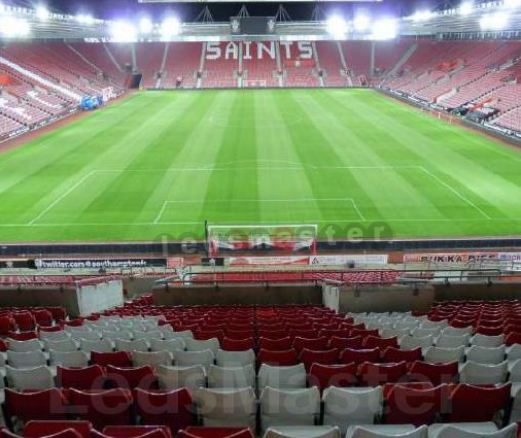
Sustainability Impact: Showcase the environmental benefits, including reduced carbon footprint and alignment with sustainability goals.
- Data-Driven Evidence:
Case Studies: Present successful examples from other stadiums and venues that have benefited from LED upgrades.
ROI Analysis: Provide detailed return on investment (ROI) calculations to demonstrate the financial viability of the project.
Performance Metrics: Share data on energy savings, maintenance reductions, and lighting performance improvements.
- Stakeholder Education:
Workshops and Seminars: Conduct educational sessions to inform stakeholders about the benefits and technical aspects of LED lighting.
Demonstrations: Organize demonstrations and pilot installations to showcase the effectiveness of LED lighting in real-world scenarios.
Q&A Sessions: Hold open forums where stakeholders can ask questions and express concerns, and provide clear, evidence-based answers.
- Engaging Key Stakeholders
- Early Involvement:
Inclusive Planning: Involve key stakeholders, including facility managers, financial officers, and event coordinators, early in the planning process.
Feedback Mechanisms: Establish channels for stakeholders to provide input and feedback throughout the project.
- Leadership Support:
Executive Endorsement: Secure support from top management and leadership to champion the LED lighting upgrade initiative.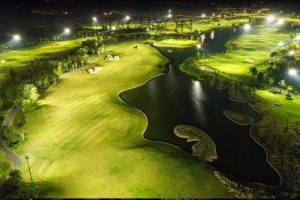
Visible Commitment: Demonstrate commitment through public endorsements and visible participation in the project.
- Collaborative Approach:
Cross-Functional Teams: Form cross-functional teams with representatives from different departments to foster collaboration and shared ownership.
Regular Updates: Provide regular project updates to keep stakeholders informed and engaged.
- Addressing Financial Concerns
- Financing Options:
Flexible Financing: Explore various financing options such as leasing, energy savings performance contracts (ESPCs), and green loans to reduce the financial burden.
Rebates and Incentives: Take advantage of utility rebates, government grants, and incentives to offset initial costs.
- Phased Implementation:
Staged Rollout: Implement the LED upgrade in phases to spread out costs and minimize disruptions.
Pilot Projects: Start with pilot projects to demonstrate benefits and build confidence before scaling up.
- Cost-Benefit Analysis:
Detailed Analysis: Provide a comprehensive cost-benefit analysis that includes initial costs, ongoing savings, and payback periods.
Long-Term Perspective: Emphasize the long-term financial benefits and ROI to justify the initial investment.
- Minimizing Operational Disruptions
- Strategic Scheduling:
Off-Peak Installation: Schedule installation during off-peak times, such as off-seasons or between events, to minimize disruptions.
Phased Approach: Implement the upgrade in sections to allow continued operation of the stadium.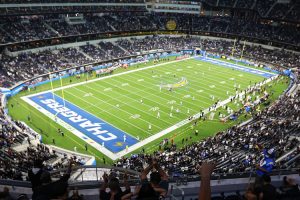
- Comprehensive Training:
Staff Training: Provide thorough training for staff on the new LED system, including operation, maintenance, and troubleshooting.
Support Resources: Offer ongoing support and resources, such as user manuals and access to technical experts.
- Vendor Support:
Reliable Partners: Work with experienced and reliable vendors who can provide seamless installation and support services.
Service Agreements: Establish service agreements for ongoing maintenance and support to ensure smooth operation.
- Building a Compelling Case
- Vision and Strategy:
Align with Goals: Align the LED lighting upgrade with the stadium’s broader goals, such as enhancing fan experience, promoting sustainability, and reducing operational costs.
Future-Proofing: Emphasize how LED lighting positions the stadium for future technological advancements and regulatory compliance.
- Success Stories:
Testimonials: Gather testimonials from other venues and industry experts who have successfully implemented LED lighting.
Public Relations: Leverage the upgrade as a positive PR opportunity to showcase the stadium’s commitment to innovation and sustainability.
- Continuous Improvement:
Feedback Loop: Establish a feedback loop to continuously assess and improve the LED lighting system based on real-world performance and stakeholder input.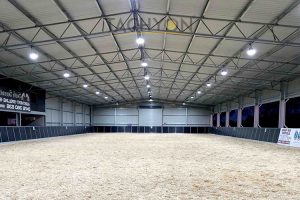
Performance Monitoring: Implement monitoring tools to track energy savings, maintenance costs, and overall performance, and share these metrics with stakeholders.
Overcoming resistance to change when upgrading to LED stadium lighting requires a strategic approach that addresses financial, operational, and perceptual concerns. By effectively communicating the benefits, engaging stakeholders, providing flexible financing options, minimizing disruptions, and building a compelling case, facility managers can facilitate a smooth transition to LED lighting. This strategic investment not only delivers long-term financial savings and operational efficiencies but also enhances the overall experience for players, spectators, and staff, positioning the stadium as a leader in innovation and sustainability.
VII. Future Trends
A. Advances in LED technology
1. Emerging innovations
The field of LED stadium lighting is continuously evolving, driven by advancements in technology and increasing demands for energy efficiency, enhanced performance, and better spectator experiences. Here are some of the most promising emerging innovations in LED stadium lighting:
- Smart Lighting and IoT Integration
- Intelligent Control Systems:
Adaptive Lighting: Systems that automatically adjust brightness and color temperature based on the time of day, type of event, and occupancy levels.
Motion Sensors: Incorporating motion sensors to activate or dim lights in response to movement, reducing energy consumption during periods of low activity.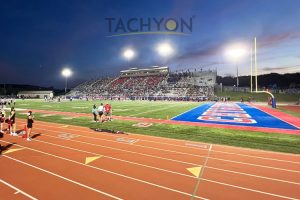
- IoT Integration:
Remote Monitoring and Management: Real-time monitoring and control of lighting systems via IoT platforms, allowing facility managers to manage lighting from any location.
Data Analytics: Using data analytics to optimize lighting patterns, predict maintenance needs, and improve energy efficiency.
- Voice and Gesture Control:
Voice Commands: Implementing voice-controlled lighting systems that allow for hands-free operation and instant adjustments.
Gesture Recognition: Advanced systems that recognize gestures to control lighting settings, enhancing interactivity and convenience.
- Advanced LED Technologies
- Micro-LEDs:
Higher Efficiency: Micro-LEDs offer higher efficiency and brightness levels compared to traditional LEDs.
Improved Durability: Enhanced durability and longer lifespan, making them ideal for high-usage areas like stadiums.
- Quantum Dot LEDs:
Enhanced Color Accuracy: Quantum dot technology provides superior color accuracy and wider color gamuts.
Increased Energy Efficiency: Greater energy efficiency through better light emission control.
- OLED Lighting:
Flexible Design: Organic LEDs (OLEDs) offer flexibility in design, enabling innovative lighting fixtures and applications.
Superior Quality: High-quality, uniform light output with minimal glare and flicker.
- Dynamic Lighting and Visual Effects
- Color-Changing LEDs:
Customizable Color Schemes: Ability to change colors dynamically, creating immersive lighting effects for different events.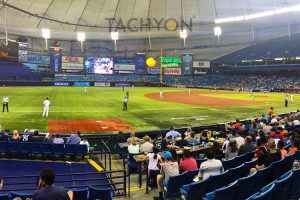
Fan Engagement: Enhancing fan engagement through synchronized light shows and interactive experiences.
- Projection Mapping:
Augmented Reality Experiences: Using LED lights and projectors to create augmented reality experiences and dynamic visuals on the field and stands.
Event Branding: Customizable projection mapping for advertising, branding, and special event themes.
- Dynamic Dimming:
Smooth Transitions: Advanced dimming technology that allows for smooth transitions and gradual changes in lighting intensity.
Adaptive Scenarios: Adapting lighting scenarios based on real-time data, such as game progress and audience reactions.
- Energy Harvesting and Sustainable Innovations
- Solar-Powered LEDs:
Renewable Energy: Incorporating solar panels to power LED lighting systems, reducing dependency on grid electricity and promoting sustainability.
Battery Storage: Using battery storage systems to store solar energy for use during night events.
- Energy Harvesting Technologies:
Kinetic Energy: Harvesting kinetic energy from the movements of players and spectators to power LED lights.
Thermoelectric Generators: Utilizing temperature differences to generate electricity for LED systems.
- Biodegradable and Recyclable Materials:
Sustainable Manufacturing: Using biodegradable and recyclable materials in the production of LED lights to minimize environmental impact.
End-of-Life Management: Developing strategies for recycling and repurposing LED components at the end of their lifecycle.
(To Be Continued)

